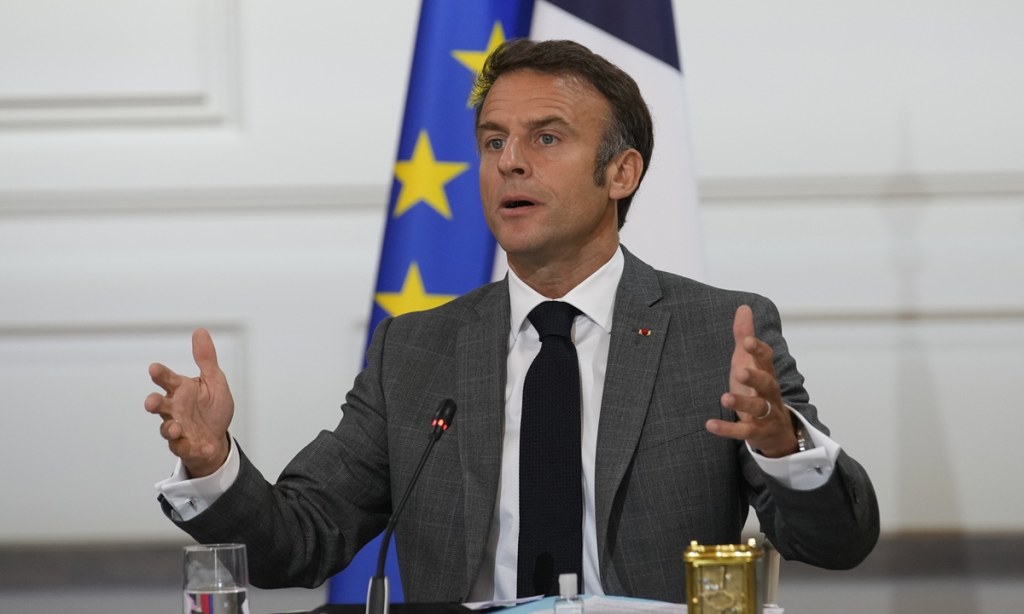French Government Reshuffle: A Major Political Event with Far-reaching Consequences
Greetings, Readers! Today, we delve into the intriguing world of French politics and explore the recent government reshuffle that has captivated the nation. In this article, we will analyze the various aspects of this significant event and shed light on its implications for France and beyond.
Introduction: Understanding the French Government Reshuffle
The French government reshuffle refers to the process of rearranging ministerial positions within the French cabinet. It is a means for the government to adapt and respond to the changing needs of the country, ensuring effective governance and representation. This process often results in the appointment of new ministers, reassignment of existing ones, and the creation or dissolution of ministries.
1️⃣ What is a government reshuffle?
A government reshuffle entails the reorganization of ministerial positions within the government, aiming to enhance efficiency, address policy challenges, and strengthen the ruling party’s agenda.
2️⃣ Who is involved in the reshuffle?

Image Source: france24.com
The reshuffle is orchestrated by the President of France, who holds the authority to appoint and dismiss ministers. It involves ministers from various departments and may also include changes in the Prime Minister’s position.
3️⃣ When does a government reshuffle occur?
A government reshuffle takes place when deemed necessary by the President, often in response to political, economic, or social circumstances. It can occur at any point during a presidential term, although it is typically more common during periods of political unrest or policy shifts.
4️⃣ Where does the government reshuffle impact?
The government reshuffle primarily impacts the French political landscape. However, it also reverberates across the European Union and international relations, as France plays a significant role in these arenas.

Image Source: globaltimes.cn
5️⃣ Why does a government reshuffle happen?
A government reshuffle occurs for various reasons, including attempts to improve governance, address policy challenges, respond to political pressures, and strengthen public trust. It is a strategic move to realign the government’s focus and adapt to changing circumstances.
6️⃣ How does a government reshuffle take place?
The President holds the power to dismiss and appoint ministers, often in consultation with the Prime Minister. The process involves careful deliberation, negotiations with different political factions, and consideration of the expertise and capabilities of potential candidates.
Advantages and Disadvantages of a Government Reshuffle
7️⃣ Advantages:

Image Source: lemde.fr
👍 Enhanced Efficiency: A government reshuffle can lead to a more streamlined and efficient administration, ensuring better coordination and implementation of policies.
👍 Fresh Perspectives: With new ministers, fresh ideas and perspectives can be injected into the government, fostering innovation and addressing previously overlooked issues.
👍 Political Consolidation: A reshuffle can help the ruling party consolidate its power, ensuring loyalty and support from ministers who align with the party’s ideology.
👍 Improved Representation: The reshuffle can result in a more diverse and inclusive government, representing a wider range of societal interests and perspectives.
👍 Public Confidence: A well-executed reshuffle can restore public confidence in the government by showing responsiveness and adaptability.
8️⃣ Disadvantages:
👎 Political Unrest: Reshuffles can create political instability, as they may be viewed as a sign of internal conflicts or weaknesses within the ruling party.
👎 Inexperience: Newly appointed ministers may lack the necessary experience and expertise in their respective fields, leading to potential challenges in policy implementation.
👎 Disruption: The reshuffle can cause disruptions in ongoing government projects and initiatives, delaying progress and impacting the continuity of policies.
👎 Public Cynicism: If seen as a mere political maneuver rather than a genuine effort to improve governance, the reshuffle may lead to public cynicism and mistrust.
👎 Intra-party Conflicts: The reshuffle can create tensions within the ruling party, particularly if certain factions feel underrepresented or excluded from key positions.
Frequently Asked Questions about French Government Reshuffle
9️⃣ Q1: How often does a government reshuffle occur in France?
A1: The frequency of government reshuffles in France varies depending on the political climate and policy priorities. It can range from once every few years to multiple times within a single presidential term.
🔟 Q2: Can the Prime Minister be changed during a government reshuffle?
A2: Yes, a government reshuffle can include the reassignment or replacement of the Prime Minister. It is within the President’s prerogative to appoint a new Prime Minister to lead the government.
1️⃣1️⃣ Q3: How long does a government reshuffle process typically take?
A3: The duration of a government reshuffle can vary depending on the complexity of the changes and negotiations involved. It can span from a few days to several weeks.
1️⃣2️⃣ Q4: Can ministers refuse the President’s appointment during a reshuffle?
A4: While ministers have the right to accept or decline appointments, it is considered a significant political decision with potential consequences for their future careers. Refusing an appointment can lead to strained relationships and political repercussions.
1️⃣3️⃣ Q5: Are opposition parties involved in the government reshuffle process?
A5: Opposition parties are not directly involved in the government reshuffle process. However, they can offer criticism, provide alternative perspectives, and hold the government accountable for its decisions during and after the reshuffle.
Conclusion: A Catalyst for Change
In conclusion, the French government reshuffle is a significant political event that shapes the course of governance in France. It serves as a means to adapt to evolving circumstances, address policy challenges, and foster public confidence. While it presents advantages and disadvantages, its ultimate goal is to ensure effective governance and representation. As France navigates this political transition, the implications and outcomes of the reshuffle will undoubtedly shape its future trajectory.
Final Remarks: A Dynamic Political Landscape
The French government reshuffle reflects the dynamic nature of politics, where key positions and policies are subject to change. It is crucial to closely follow these developments as they impact not only France but also the broader European Union and international relations. As readers, staying informed and engaged empowers us to understand and actively participate in the political processes that shape our societies.